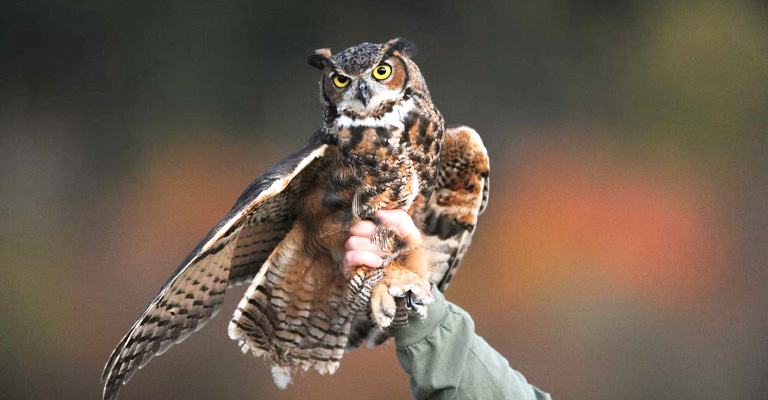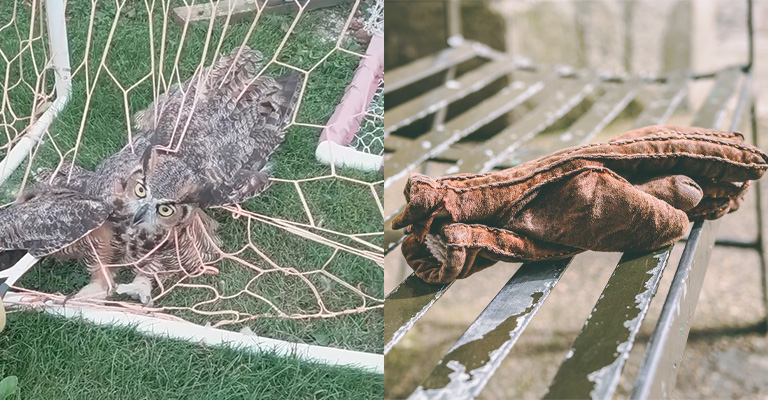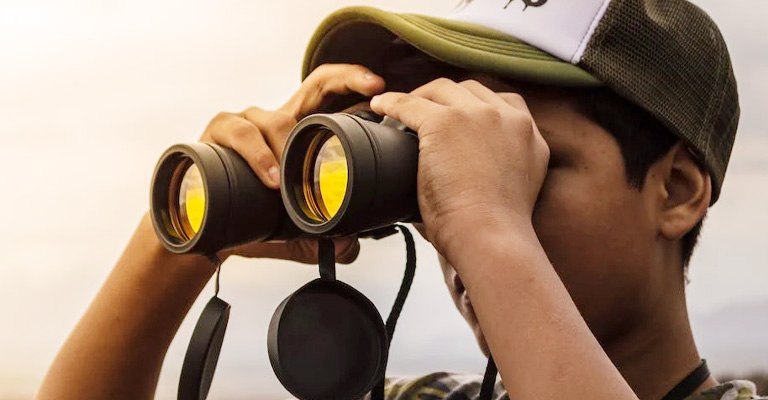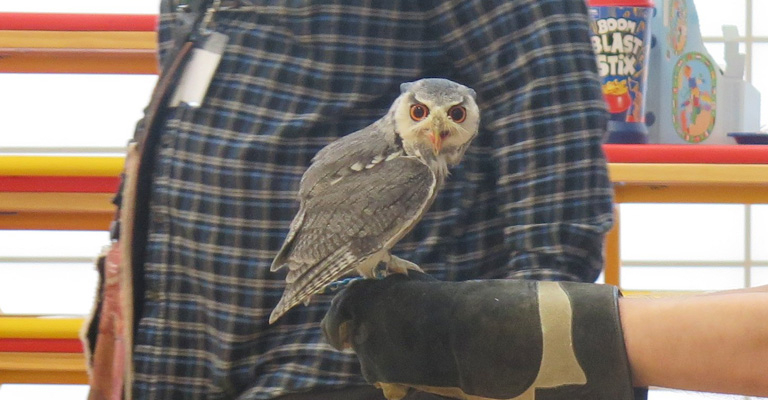Owls, with their mysterious allure and enigmatic nocturnal habits, have captivated the imagination of many. Whether you’re a wildlife enthusiast, a bird watcher, or simply curious about these majestic creatures, learning how to catch an owl can be a rewarding pursuit.
However, it’s important to emphasize that catching an owl should be done with utmost care and respect for these magnificent birds. So, how to catch an owl?
In this guide, we will delve into the essential techniques and considerations for safely and ethically capturing owls for research, conservation efforts, or educational purposes.
Understanding their behavior, habitat, and the legal regulations surrounding owl capture is fundamental before embarking on such an endeavor.
We’ll also explore the necessary equipment, baiting methods, and expert tips to increase your chances of a successful owl capture.
Whether you’re interested in helping with owl rehabilitation, or research, or you simply wish to witness these winged wonders up close, our guide will provide you with the knowledge and skills to embark on this unique adventure.

How to Catch an Owl?
Before attempting to catch an owl, it’s crucial to have a deep understanding of these birds. Owls are nocturnal creatures with keen senses of sight and hearing. They are solitary and territorial, which means they can be elusive and cautious around humans.
Each species of owl has its unique behaviors and habitat preferences, so research the specific owl species you intend to capture.
Legal Considerations
Check local, state, and national regulations regarding owl capture. In many regions, it is illegal to capture owls without the proper permits. These regulations are in place to protect owl populations and ensure their conservation.
Ensure you have the necessary permits and permissions before attempting to capture an owl.
Ethical Considerations
Owl capture should only be pursued for responsible reasons such as research, conservation, or education. It is essential to prioritize the welfare of the owl throughout the process.
Capturing an owl solely out of curiosity is unethical and can harm these birds. Always respect their natural habitat and minimize stress during capture.
Equipment and Tools for Owl Capture

Proper equipment and tools are critical for ensuring the safety and well-being of both the owl and the handler during capture and any subsequent activities.
Choosing the right equipment and using it responsibly is an essential part of the ethical and effective capture of these remarkable birds.
Owl Net
Specialized owl nets are designed to be highly effective while ensuring the safety of both the owl and the handler. They are typically made of soft, fine mesh that minimizes the risk of injury to the bird.
These nets come in various sizes to accommodate different owl species, from the smaller screech owls to the larger great-horned owls. The net’s size should be chosen carefully to ensure it captures the bird without harming it.
Gloves
Thick, protective gloves are indispensable when handling owls. Owl talons are equipped with sharp and powerful claws, which they use for hunting and defense. Proper gloves provide a protective barrier, reducing the risk of injury to your hands.
When handling an owl, it’s essential to hold the bird firmly yet gently, and these gloves help you maintain a secure grip without harming the owl.
Banding Equipment
If your purpose for capturing an owl is research-related, you may need banding tools and bands that are approved by your local ornithological organization. Bird banding is a method of tracking individual birds for research and conservation purposes.
The banding equipment includes specialized pliers for attaching leg bands, which must be done carefully to avoid causing discomfort or injury to the owl.
Binoculars and Field Guides

Binoculars are invaluable for observing owls in their natural habitat. Owls are often elusive and may be perched high in trees or concealed locations. Binoculars allow you to study their behavior and identify different species from a safe distance.
Field guides provide essential information about owl species, helping you understand their habits, ranges, and identifying characteristics.
Transportation
After capturing an owl, you’ll need to transport it to another location for research, rehabilitation, or any other necessary purposes. A secure, well-ventilated container is essential for this. The container should be designed to minimize stress to the owl during transportation.
It’s advisable to keep the container dark or covered to maintain a calm environment, as owls are sensitive to light and may become stressed if exposed to too much brightness.
Capture Techniques
Incorporating the right capture techniques within a responsible and ethical framework is essential.
Here are the methods designed to minimize stress to the owls and ensure that any capture activities contribute positively to research, conservation, or educational efforts.
Lure and Bait
One of the primary capture techniques involves the strategic placement of bait, typically small mammals such as mice, voles, or other prey appropriate to the owl species you’re targeting. This bait serves as an irresistible temptation for owls, enticing them to approach the capture area.
It’s important to emphasize that this baiting process should be conducted legally and ethically, adhering to local regulations and ensuring that the bait does not cause harm or distress to the owl.
This method must be carried out under controlled conditions to minimize potential harm to the owl and to follow ethical guidelines for wildlife handling.
Use Decoys
Sometimes, the strategic use of decoys can be an effective way to attract territorial owls. Owls are known to be territorial birds, and when they perceive the presence of another owl in their territory, they may investigate or defend their territory, often leading them to come into view.
Decoy owls, which can be life-sized and realistic, are typically placed in visible locations within the owl’s territory. This piques the interest of nearby owls and can draw them closer, facilitating their capture.
Using decoys requires careful planning, and these decoys must be deployed responsibly and by ethical and legal standards.
Wait Patiently
One of the key elements in owl capture is patience. Owls are renowned for their elusive and cautious nature. It is common for capture attempts to require a considerable amount of waiting for the owl to approach the bait or decoy.
Patience is an essential virtue when dealing with these birds. Observing from a distance, remaining still, and minimizing any disturbances in the vicinity are all crucial to the success of your capture.
Rushing or acting impatiently can easily scare the owl away, diminishing the chances of a successful capture. Therefore, waiting patiently is often the most effective approach in this endeavor.
Capture Process

Below are the steps that highlight the importance of a methodical and ethical approach to owl capture, emphasizing the well-being of the bird and the safety of those involved in the process.
By following the right guidelines, you can contribute positively to owl research, conservation, and educational efforts while ensuring the welfare of these remarkable creatures.
Expanding on the detailed capture process for safely handling owls:
Monitoring
Once you’ve set up the bait or decoy, you need to carefully monitor the owl’s behavior from a distance. This phase requires keen observation skills. Ensure that the owl approaches the bait or decoy without exhibiting signs of distress or unease.
The goal is to let the owl approach the capture area calmly, which increases the chances of a successful capture. Ensure the owl is positioned within the range of the capture net, but avoid making any sudden movements or noise that could startle it.
Net Deployment
Timing is crucial in this step. When the owl is in the ideal position – within range of the net and poised to be captured – you should release the net swiftly and accurately.
The net should be designed to cover the owl gently but securely, preventing it from escaping or causing harm. Accuracy and the proper selection of the net size are essential, as an improperly deployed net can harm the owl or result in an unsuccessful capture.
Approach Carefully
After successful net deployment, it’s vital to approach the captured owl slowly and calmly. Sudden movements or loud noises can agitate the bird and increase its stress level.
To reduce the owl’s anxiety, you can cover its head with a cloth or towel, which provides a sense of security and minimizes visual stimuli. This approach helps maintain a calm and controlled environment during the capture process.
Safety First
Safety is a top priority, both for you and the owl. Owl talons are sharp and powerful, designed for hunting and defense. Avoid direct contact with the owl’s talons, as they can cause injury.
Wear thick, protective gloves to reduce the risk of accidental scratches or punctures. Additionally, be cautious and attentive if the owl attempts to defend itself.
Handling these birds should always be done with the utmost care and consideration for their well-being.
Handling
If you have experience in handling owls and your purpose for capture includes banding or examination, you can gently handle the owl for these tasks.
However, if you lack the necessary experience, it’s advisable to contact a local wildlife rehabilitator or an expert.
Professional handling ensures that the owl is not stressed, injured, or mishandled during the process. Wildlife rehabilitators and experts have the knowledge and skills to safely handle owls and are equipped to address any potential issues that may arise during capture.
Release
After collecting the necessary data or completing your research, it’s time to release the owl. Releasing the owl in the same location where it was captured is crucial to minimize disruption to its natural habitat.
Handle the owl with care during the release to avoid causing harm or undue stress. Ensure that the owl is released in a manner that allows it to fly away safely and without any immediate threats.
FAQs
Is it legal to capture owls?
Owls are protected by various laws and regulations in most countries, and capturing them without the appropriate permits is generally illegal. It’s essential to research and understand the local, state, and national regulations regarding owl capture.
Is it safe to handle owls?
Handling owls can be risky, as they have sharp talons and beaks. It’s important to take safety precautions, such as wearing thick, protective gloves and approaching the bird calmly.
What’s the best time to capture owls?
Owls are primarily nocturnal, so capture attempts are often more successful during the hours of dawn and dusk. Different owl species may have varying activity patterns, so it’s important to research the specific owl species you intend to capture for insights into their behavior and habits.
What should I do if I find an injured owl?
If you come across an injured owl, it’s best to contact a local wildlife rehabilitator or a wildlife rescue organization immediately. Do not attempt to capture or handle the owl yourself unless you have the appropriate experience and training.
What are the ethical considerations when capturing owls?
Ethical considerations are paramount when capturing owls. Always prioritize the welfare of the owl and ensure that your capture activities are conducted for responsible reasons such as research, conservation, or education.
Conclusion
Catching an owl is a unique and challenging endeavor that requires a deep understanding of these magnificent birds. It’s important to approach this task with a sense of responsibility and ethical consideration.
Throughout this guide, we’ve explored the critical aspects of owl capture, from understanding their behavior and habitat to the legal and ethical considerations. We’ve also discussed the necessary equipment and techniques for a safe and successful owl capture.
Remember, owls are not to be captured for mere curiosity but for responsible reasons such as research, conservation, or education. Always prioritize the well-being of these birds, and if you choose to pursue owl capture, do so with the highest level of care and respect.
As you embark on your journey to catch an owl, keep in mind the broader goal of contributing to owl conservation and a better understanding of these fascinating creatures.
By following the guidelines and insights provided in this guide, you can engage in this extraordinary endeavor while ensuring the protection of these remarkable birds.